Programmatic is growing at more than 400% a year: Gulshan Verma
Part of Bennett, Coleman & Co Ltd (BCCL), Times Internet Limited (TIL) has steadily grown from being a digital media operation to a leading digital network of India. The network has grown through its various strategic industry alliances as well as investments in technology companies and launching various apps.
In December 2015, TIL brought on board Gulshan Verma as its first Chief Revenue Officer. As CRO, Verma is responsible for the entire revenue of the digital group across both advertising, classified and e-commerce/ transaction based businesses as well running Business Development and Strategic Partnerships.
Earlier this year, TIL announced its partnership with GirnarSoft, the parent company of auto portals like CarDekho.com, BikeDekho.com, Gaadi.com and Zigwheels.com. Through this partnership, TIL has been strengthening its base with car and two-wheeler buyers in the country.
In 2016, TIL invested $100 million in online smart marketing platform Colombia.
“We are a 175-year old organization. We have the largest print newspaper organisation in the country, we are the No.1 news publication, and we are the No. 1 digital media products company. We have a history of engaging and respecting our users and that’s not something very few people can do. We are not here to collect information and disappear tomorrow. We are part of the ecosystem and that’s an important part of it,” asserted Verma.
In a detailed conversation with Adgully, Chief Revenue Officer Gulshan Verma speaks about Times Internet’s growth, the digital ecosystem in India, content & revenue strategy and much more. Excerpts:
As per a TOI report, Times Internet leads the digital news space with a 51 per cent share of the user base. How is the pie distributed between news and entertainment?
It’s not just news, but all of the content consumed in India. We don’t just have The Times of India, we also have Newspoint, Navbharat Times, Esamay. As of now, slightly under 50 per cent is what you would call hardcore news, politics, Indian news, world news, business news and city news. The next segment after that is entertainment news, which is around 40 per cent; the third area is lifestyle, where we have brands like iDiva and MensXP, where people go to directly. But the biggest areas are news, entertainment and lifestyle, and together they constitute over 85 per cent of our content that’s consumed.
How is TIL tackling issues like ad frauds, measurement miscalculation, and metric misreporting?
What matters here is trust. Does trust work between the brand and the consumer? Does the brand trust the consumer, and vice versa? Does the brand work within the trust of the publisher on all platforms? Thus, it’s a three-way conversation. We have always known that consumers’ trust in the brand is important. The way that I look at it is that in the past 2 years a lot of focus has been on the relationship between brand and the platform. How third-party measurement is done, how much time was spent, how much is the viewability, etc. Now, we are moving into a segment where the consumer has to trust the publisher and the platform as well. And our argument is that while you may not always agree with what we write, we will stand up for it, put our hands up and say this is ours, we have fact-checked it ourselves, and that this is our content that we have originally created and verified, and are willing to defend it. Consumers trust our content more. So why should a brand care about this relationship?
Consumers don’t care about viewability or third-party verifications, but they do care about the fact that we stand for our content and we curate it and that it is brand safe. They do care about the fact that we verify all the news and there’s no such thing as fake news and that we can stand up and say that this is where we have gotten our data from and we have a whole legal department that reviews it. That’s an important part where we have been ahead of the other platforms today.
The second thing is how brands and platforms work together. Our view is very simple, we will work with third-party verification such as Moat on video, Nielson on audit profiling, for example. So, if you want to do age and demographics, we will support Nielson, where they come in and verify that we targeted a campaign between the ages of 18 and 35 and they will verify it. They act more as a checker, but trust between consumers and the platform is very important.
Talking about consumer trust, what are the top challenges that digital marketers are facing today?
I think that marketers are as much under pressure to drive business results as any part of the organization. So, the relationship between marketers and sales is very critical and the questions is how do I think about driving business results?
To give you an example, in print when an advertiser advertises in The Times of India, they will open up their shop an hour early because the phone calls will start at 8 am. For digital, it’s more complicated because you have a lot of touch points. The question really is how do you figure out what’s the impact on the business and how will it build to results? An easy way to do this is a revenue sharing kind of a model, but it doesn’t scale up. So, I think they are all trying to figure out what interaction of their customer can work among online, offline, TV, email, coupons, SMS, and how do they all tie in together. While some marketers say that they would only pay on a cost by convenient basis or cost by position basis, I think that undervalues what digital media can do, including engagement. These are the big conversations.
The digital advertising model is built around paid advertisement which is important. But people understand now that they have to be a publisher as well and create content that their brand really cares about. It could be something as unique as uploading an iPhone video or putting something up on pop culture. Those are the some important conversations to figure out. Traditionally, I can get a 30-second slot on television; at best I can get my brand integrated into some TV soap. But with digital, I can interact with my consumers directly through social media, I can interact with my PRM, they can visit my website, they can read influencer reviews on The Times of India, for example. So, that gives you a lot of flexibility.
Is it more important for digital marketers to actually test themselves as a trusted medium for the consumers instead of focusing on ROI?
Consumers have many different touch points before they go and buy the brand. They could be a loyal customer or a new customer. I think the tougher conversation is how do you create demand and interest? As people come to us to know about the world, they come to us to understand what movies are trending, what our review for a phone is like, etc. We are able to influence them. I think a short term digital marketing plan will focus on reaching the in-market consumer and the next part of it is to focus on reaching them though social media, content, video advertising to create in-demand.
TIL has partnered with Truecaller, Uber, Girnarsoft and Moat. What is the strategy behind these partnerships?
All these partnerships are for different things. Moat was about building trust between the brand and the platform. When we partnered with Moat, they didn’t even have an office in India, I had to tweet out to the CEO to partner up ahead of anyone else in the market. Girnarsoft as an example of helping brands identify in-market consumers. Buying a car is a 3-6 week long decision, it’s not something that you just go and do. What we discovered was that people consider 3-5 brands and 2-3 different models as there is an early interest stage of research, marketers are able to reach these consumers before they have made a decision.
And the way I see it right now, the level of insights for an in-market customer goes beyond search.
In the case of Girnarsoft, consumers go from two search engines to say the Cardekho website or Bikedekho or Zigwheels. They read more. So this helps the advertiser or marketer who wants to reach in-market auto-buyers even beyond the auto stage. If I search for, say a Tata Hexa, is it because I am looking for a car or am I looking for a research project for my school kids, for example. These are the different things that you are not likely to read in a search engine, but because we have a content partnership with Girnarsoft, we are able to identify the user base at a deeper level.
With Uber, for example, if I’m in Gaana I can actually play my music playlist in Uber. The consumers get relevant advertising and they have the ability to customise their journey in Uber. Moreover, the ads that the brand is placing are verified by a third-party.
The other things that we look at is where are we are creating value for the consumer, for the marketer and where are we creating value for TIL as a platform.
For a lot of agencies, the customer journey is most important and everybody wants to provide better customer journeys. What is your view on this and how do you approach that part of understanding between marketers now?
I think, depending on the product we can be at the beginning of the journey, where somebody would read something and say I’ve learnt a bit more about it. We can also be in the middle of the journey, where somebody wants to do a deeper review of our product, maybe ask some questions and talk about their experiences. And ultimately you can begin at the end of the journey, where somebody buys an auto car or the idea of ETMoney, buying mutual funds and we can help them close the deal. We spark the interest and drive that interest, and in some cases we also help them close the transactions. So, depending on what your specific need is, we can move up and down the funnel very steeply and very quickly.
How do you view the rapid rise of digital advertising?
I started working in digital in India 10 years ago, and at that time the conversations with the CMOs were around should one have a website. Then 5-6 years ago it was about whether one was present on social platforms, on Facebook, Twitter, LinkedIn. And 3-4 years ago, the conversation was about do you have mobile presence. Two years ago it was about do you have an app, and now the conversation is are you on video, or are you digitising your entire system. Historically, most CMOs have looked at it as a marketing medium, whereas ultimately what you really want to do is think about how you make your business more digital friendly. Let me give you a more specific example, Uber is the most valued transport in the world, but does not own cars; it is using digital as a medium to aggregate cars. If you look at ETMoney, last quarter we did more than Rs 2 crore worth of mutual fund transactions a day because people trust us to provide recommendation on investments.
Thus today, digital is more than a marketing medium, it is an engagement and transactional medium.
How do you view the growth of programmatic advertising in India?
I think there are two parts to this; the first part is that the view of marketers was that I am going to reach the same user or the email account and I would charge the user. Over the last one year, two or three things have changed. First is the focus on brand safety and the importance given to quality of content. Also, how do you leverage the data that we have and the data that you have to merge to create and provide a compelling and personalised advertising experience. Programmatic is growing at more than 400 per cent a year. What advertisers are doing right now is not simply a way in which you can achieve users on their email account. It is about understanding when somebody is reading an article or watching a video, or when somebody has read a bunch of reviews on car portals or on phones, they are probably more likely to be interested in buying it. People take advice on quality and here we can leverage the insights that we have. Those are very important indications, because we reach 270 million people across the Internet and we should be able to impact them in a meaningful way.
Going forward, what are your expansion plans?
We are India’s largest digital products company, we employ 5,000 people across 9-plus languages and we reach 270 million people a month. What we are trying to do is create three types of experiences. We create products that engage people, like TOI and Cricbuzz; products that entertain people, like Gaana; and products that help users, like MagicBricks. I think typically what you would see across all our assets is that we are looking through our lenses of - do they (our products) help the user get entertained, engaged, or enable them to make a better decision. We are looking at a many opportunities, some of them will depend on whether they help us fit into that space or not.
Is Times Internet a subscription based model?
I think we’re a digital-based model, meaning today some parts are driven by advertising and some parts are drive by subscription. People who subscribe on Magicbricks are property brokers, whereas HR managers subscribe on TimesJob. Then there are models where the consumers pay us directly. Gaana is a very good example of subscription-based model.
If you look over time, we have a healthy mix of all three models. For us, all three are important. If you want to provide an experience that a user wants to have, a subscription model works. Since Times Internet already has a large user base, getting users is not a big issue, what is more important is whether our content is compelling enough that our users would want to pay for it.
Has the revenue pie changed over time?
Today, slightly more than half of our revenue is from traditional advertising, while the rest of it is made up of consumer transactions, advertising business model; subscription is a small portion. Gaana has both advertising-based model for those users who don’t want to pay and a subscription-based model for those who don’t mind paying.
What are the different kinds of user engagement you are working on presently?
For us, engagement is going up across every single product, whether it’s Gaana, which has grown 300 per cent over the past year, or our latest video quiz app called BrainBaazi (555,572 concurrent viewers as of May 2018),which was launched in February this year. BrainBaazi is a live quiz game show, where one can win cash prizes in their Paytm or MobiKwik wallets. The application has seen over 5 million downloads on Playstore and is growing at a rate of 10 per cent daily.
What are the trends that you see taking place with networks like yourself and others in India?
The biggest trend that I can see right now is that the focus of digital marketing is on a few main players. Going forward, brands would want to work with fewer players that provide compelling user experiences with insights. I think they want to give people complete solutions and not just products and insights.



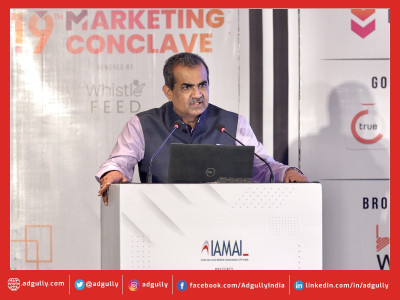
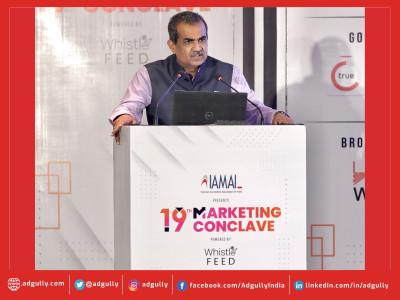
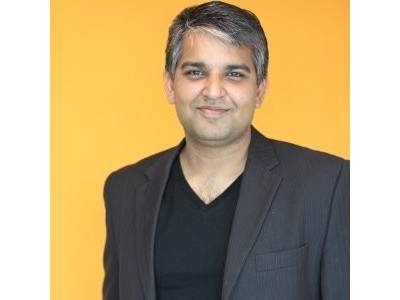
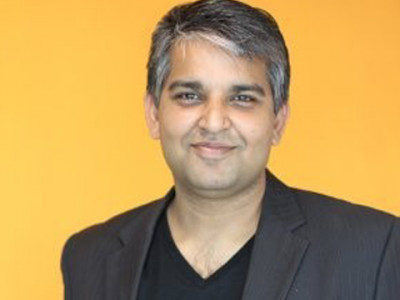
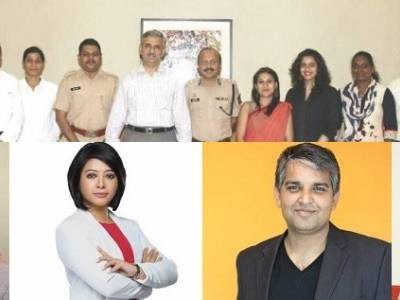

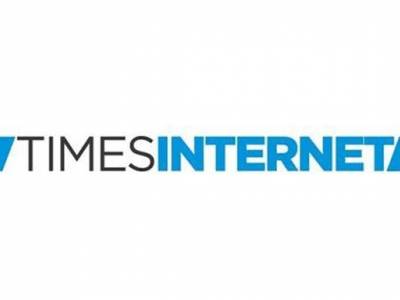


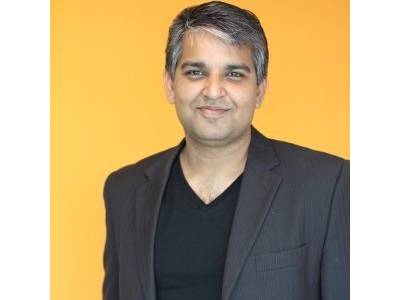



Share
Facebook
YouTube
Tweet
Twitter
LinkedIn